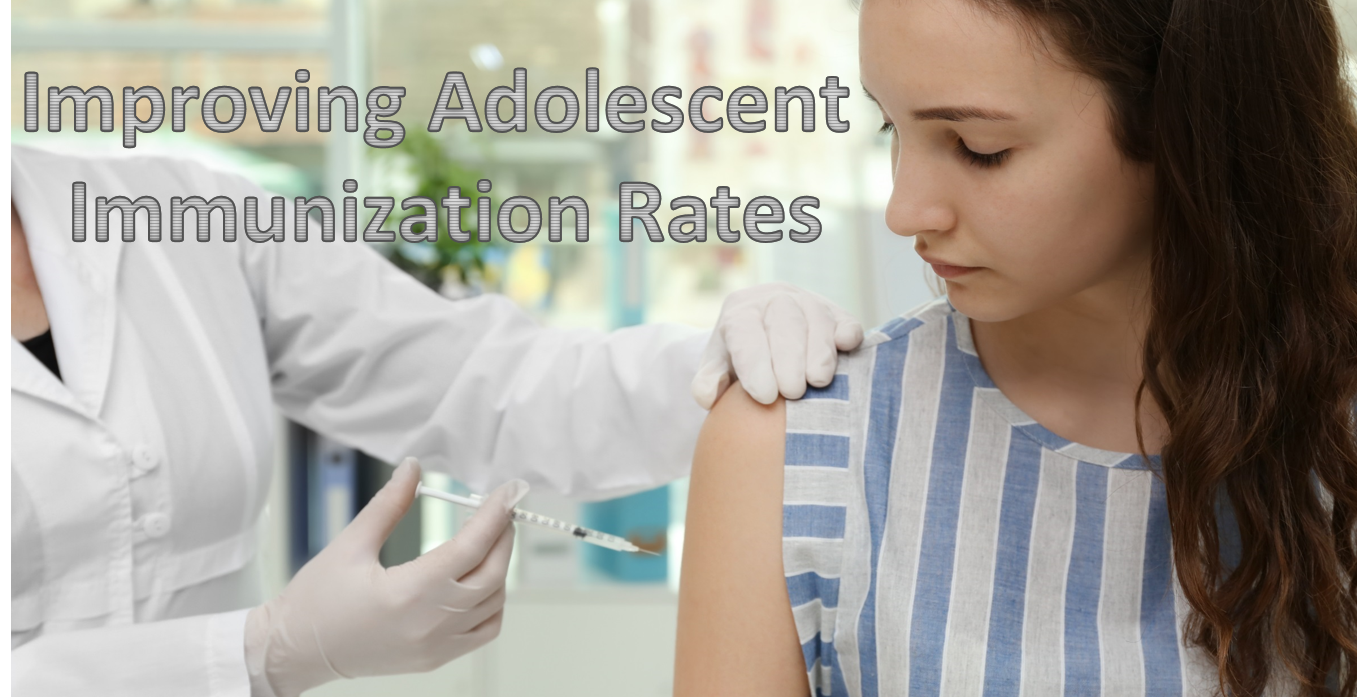This post is the first in a series on adolescent vaccination.
When Sanford Health, a rural not-for-profit health system based in the Dakotas, Minnesota, and Iowa, took a look at their adolescent vaccination rates, they were shocked by what they found. Baseline rates for the completion of the HPV series ranged from 15%-29% in their clinics, and rates for completion of the Meningococcal series ranged from just 8%-38%. Sanford decided to make system-wide changes to improve their adolescent vaccination rates.
Sanford began by creating an immunization strategy department lead by the Immunization Strategy Manager. A cross-department team gathered to form an enterprise immunization committee and craft a plan. The initial stage focused on increasing administration of the HPV vaccine at a test group of seven clinics. The strategy consisted of three parts:
- Providers were given their immunization rates as well as those of their colleagues. This put accurate data into the providers’ hands and engendered a sense of competition between staff.
- Sanford emphasized a “no missed vaccination opportunity” culture, encouraging providers to assess immunization status for every patient at every encounter.
- The system sent reminder and recall letters to parents of adolescents.
Over the two year test period, HPV completion rates increased by an average of 15%, and zero-dose rates decreased an average of 22%. Armed with this data, Sanford made plans to expand the program. The organization added standing orders for most vaccines, enabling RNs, LPNs, and MAs to administer immunizations. These orders eliminated more missed opportunities and empowered staff to own their immunization rates.
Sanford, with the help of the Immunization Action Coalition and Sanofi Pasteur, also created a curriculum to train people to become immunization champions. The VAX Champ program created immunization champions content experts for each clinic. The program also trained its students to examine current vaccination rates and create plans to improve them. These interventions saw first and second dose rates for MenACWY climb steadily. In some clinics, second dose rates more than doubled.
Sanford Health’s efforts helped to not only increase adolescent vaccination rates but also advanced their mission to improve patient health. These steps can be applied to healthcare systems or offices of any size. Sanford’s success shows that with dedication and a solid plan adolescent immunization rates can improve.
Next in this series is a guide to CPP’s 2nd Dose Program that rewards members for improving second dose rates of several immunizations, including those that Sanford highlighted. For more information, visit our website.

[…] This post is the second in a series on increasing adolescent immunizations. For a case study on how one health system increased their overall adolescent vaccination rates, see our previous post. […]